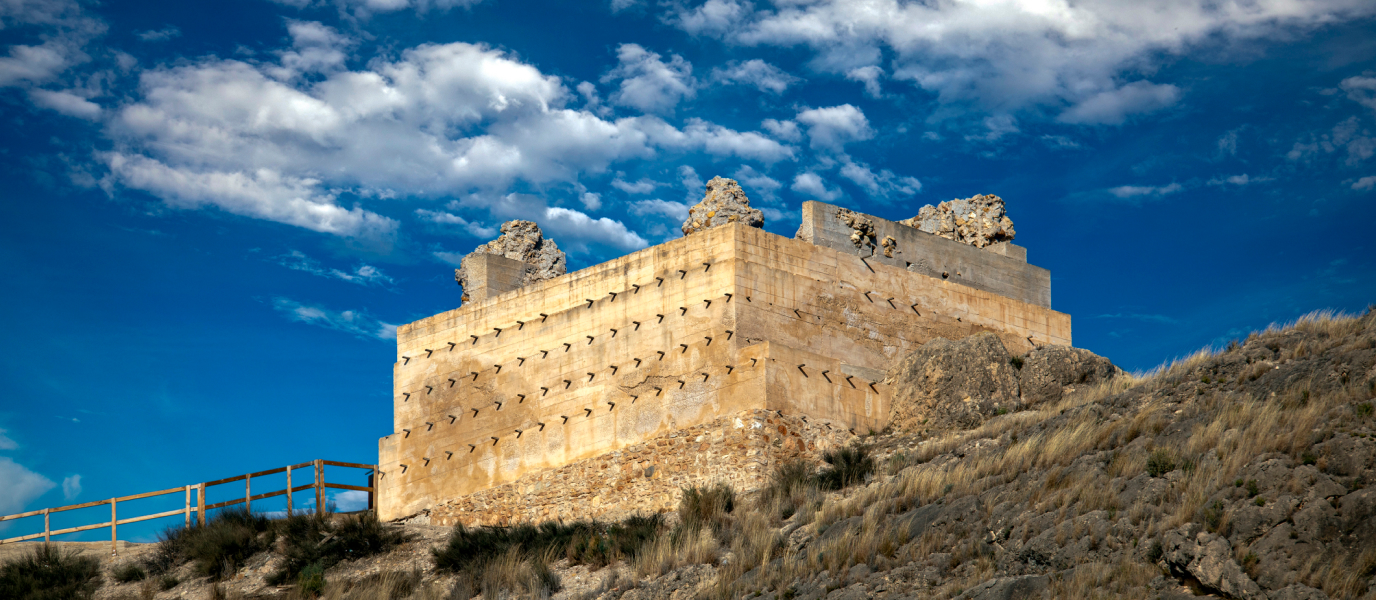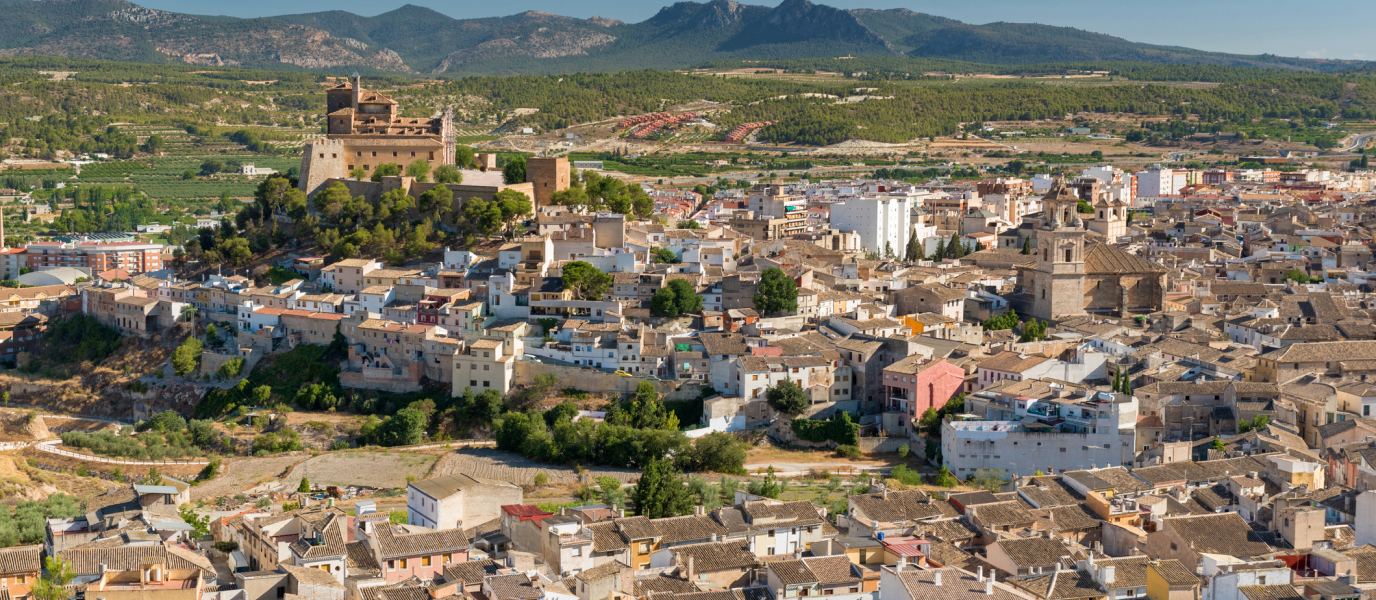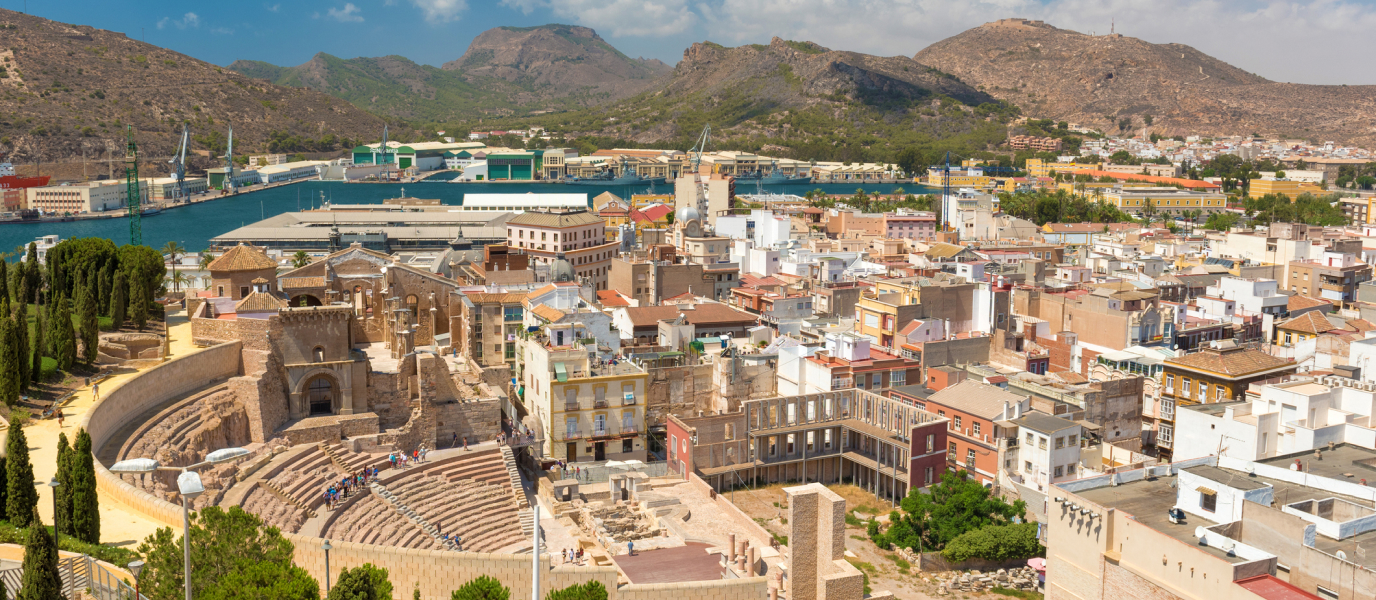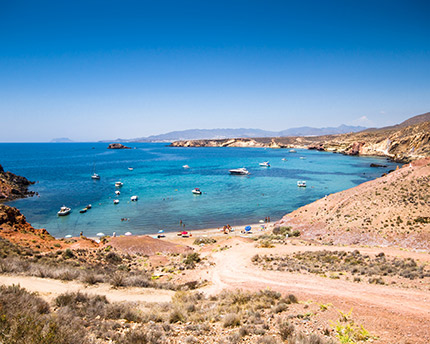Calasparra is known throughout Spain for being the first place in the world to have rice with its own appellation (since 1986). It was not Valencia or Alicante, but a small town in the northwest of the Murcia region that cultivates terraced rice fields in the fertile lowlands of the river Segura with different varieties such as Balilla x Sollana and Bomba.
Nevertheless, this is not the only attraction: in Calasparra you can visit a legendary sanctuary carved into a rock and the famous Clock Tower and make a reservation at one of its restaurants to try any of its paellas or traditional dishes.
Sanctuary of Our Lady of Hope
The Sanctuary of Our Lady of Hope surprises you when you arrive at its main entrance as it is carved into the stone and integrated into the cave which gives rise to this pilgrimage site. Some have even dared to call it the Little Petra of Murcia because of its layout.
The cave where two images of Our Lady of Hope are kept used to be a shepherds’ shelter, near the river Segura, with a spring inside. Nevertheless, the stories of apparitions and miracles led to more and more devotion and, as early as the 17th century, a hermitage was established there.
In fact, for centuries, fervent pilgrims told stories about its miracles, carried holy cards and spread their joys.
You must not miss the oldest virgin that presides the sanctuary, which is more than 400 years old, as it is known to have been donated in 1617 by Juana Sánchez.
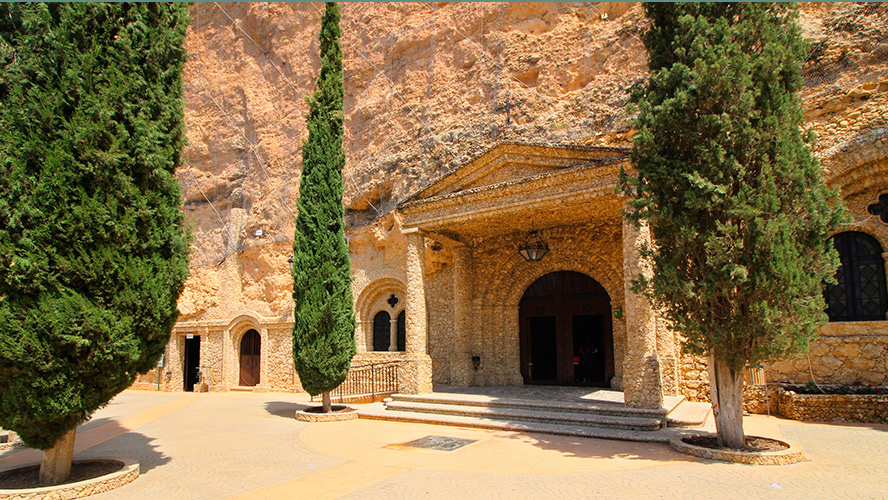
Las Lomas observation deck
This is the perfect place for understanding what rice means in Calasparra. From this viewpoint, which is located on the road to the Sanctuary of Our Lady of Hope, you can see the entire rice-growing plain, full of flooded terraces where this so-called white gold is cultivated.
Rice is sown in May and the meadows seen from this panoramic view are waterlogged for months. In summer, the rice fields are already green and, by autumn, around October, they are already yellow. That is when harvesting begins.
Archaeological Museum and Rice Museum
Two museums complete the tourist visit that can be made in Calasparra: the Archaeological Museum and the Rice Museum, although they cannot be visited at the moment since they are undergoing rehabilitation and construction work.
The Archaeological Museum occupies one of the most iconic buildings in the city centre: that of the Commendation of the Order of Saint John of Jerusalem. This 18th century building is a reminder of the close historical relationship that Calasparra had with that Order until the mid-19th century.
Its collection includes some of the objects found at nearby sites such as the Islamic site of Villa Vieja.
We have already explained the importance that rice has always had in the history and economy of Calasparra, so it is normal that it has a museum dedicated solely to this product. In addition, a building linked to the history of this crop was chosen for its location: the Granary House of the Count of the San Juan Valley, of neoclassical inspiration, where the cereals were stored.
It was opened in 2007 and shows everything from how many rice fields the village has to the process of growing rice and the best way to eat it. It houses old photographs of farmers, machinery of the time, tools and even part of a mill donated by the inhabitants of Calasparra.

The Clock Tower
Very close to Calasparra’s main street is the Clock Tower, whose use and existence were recorded in a chapter deed in 1609. The three sections of this tower, in the Mudejar style and with a square floor plan, become narrower as it rises, giving the impression of even greater height.
The clock that gives it its name is on the second level and two bells that were widely used in its time and which give it a special function as a bell tower are on the top level.
There is a spiral staircase inside leading to the belfry, the tower’s highest point, but it cannot be visited.
Where to eat in Calasparra
Almost anywhere in Calasparra you can eat well, but there are three places where you will enjoy your food. The first one is Restaurante Centro Calasparra, an ideal place to order a local dish or a rice stew.
Another place is La Tasca de Calasparra, right in the centre, with a bullfighting atmosphere and good rice dishes. The third one is La Esquinica bar, which is a sure bet for tapas and snacks.
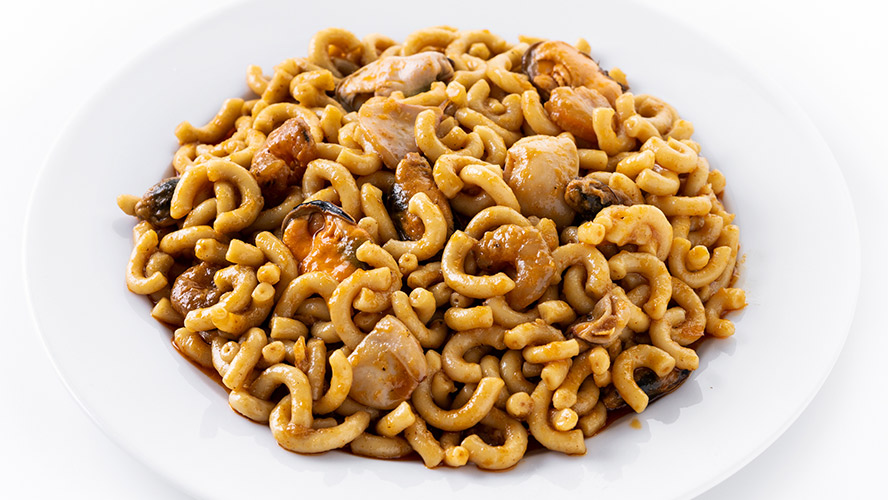
Things to see near Calasparra
One of the most worthwhile visits near this town is the Villa Vieja archaeological site. The site is an ancient Islamic settlement where fortifications, walls, ceramics, household goods and utensils have been uncovered. The greatest splendour of Villa Vieja was between the 12th and 13th centuries, which coincides with the historical struggles in Murcia between the Islamic and Christian kingdoms.
Another very curious site, but much older than Villa Vieja, is Abrigos del Pozo, dating from the Epipalaeolithic period, i.e. around 8,000 years old. The most striking features are its cave paintings, which show human figures and symbolic animals. This cave is located in the Almadenes Canyon, which is also worth a visit as it is an incredible gorge over the river Segura and a protected natural area.
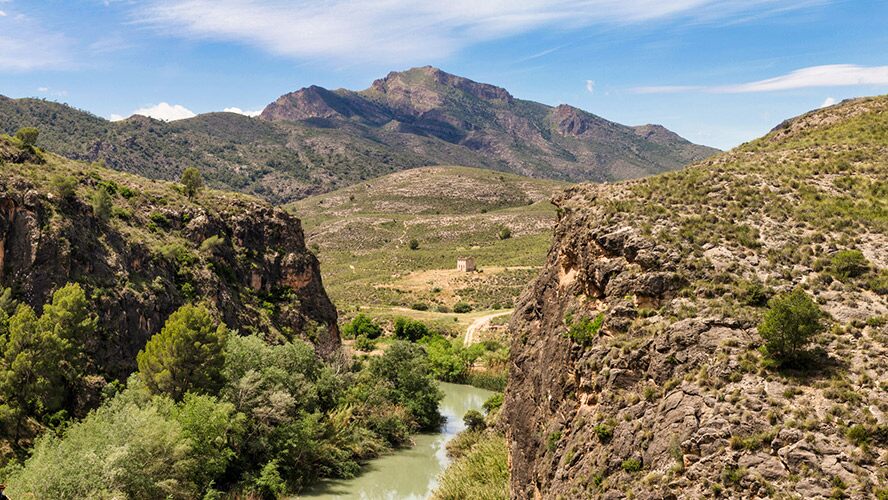
Where to stay in the province of Murcia
There are many accommodation options near Calasparra but it is a good idea to stay in the city of Murcia so that you can continue to enjoy the region’s history, art and gastronomy. There, the four-star Occidental Murcia Siete Coronas is the most modern hotel in the capital, having been recently renovated, but with a perfect location, right in the centre, and a history of more than half a century of experience.
A few minutes walk away you will find the river Segura, the Bullring and the Cathedral, as well as a perfect connection by public transport to other parts of the city if you want to continue exploring.
Its 156 rooms are modern and full of light and many of them have views of the city. It also has a gym, a magnificent Bistro restaurant with a terrace so that you can stay in the hotel if you do not want to move and nine multifunctional rooms equipped with the latest technology. The hotel has a car park and is pet-friendly.





























































